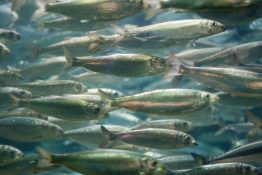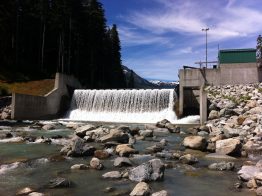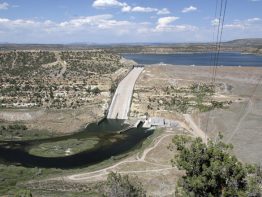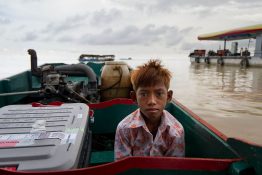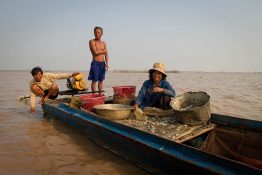To successfully manage fisheries, factors in the environment that affect fish — like food sources, predators and habitat — should be considered as part of a holistic management plan. That approach is gaining traction in fisheries management, but there has been no broad-scale evaluation of whether considering these ecosystem factors makes any economic sense for the commercial fishing industry. A team of ecologists and economists has addressed that question in the first study to test whether real-life ecological interactions produce economic benefits for the fishing industry.
Read more at UW Today »Small hydroelectric dams increase globally with little research, regulations
Hydropower dams may conjure images of the massive Grand Coulee Dam in Washington state or the Three Gorges Dam in Hubei, China. But not all dams are the stuff of documentaries. Tens of thousands of smaller hydroelectric dams exist around the world, and all indications suggest that the number could substantially increase in the future. These structures are small enough to avoid the numerous regulations large dams face and are built more quickly and in much higher densities.
Read more at UW Today »Fish to benefit if large dams adopt new operating approach
Thousands of dams built along U.S. rivers and streams over the last century now provide electricity for homes, store water for agriculture and support recreation for people. But they also have downstream impacts: They reduce the amount and change the timing of flowing water that fish rely on for spawning, feeding and migration. Recognizing that many large dams are here to stay, a UW team is investigating an emerging solution to help achieve freshwater conservation goals by re-envisioning the ways in which water is released by dams.
Read more at UW Today »Interdisciplinary UW project seeks sustainable blueprint for hydropower dams
In Southeast Asia along the Mekong River, the debate is over when and how — not whether — dams will be built. The river and its tributaries support what’s likely the largest inland fishery in the world, worth more than $2 billion annually. Every day, 60 million people or more rely on the Mekong for food and their livelihoods. In the coming years, nearly 100 hydropower dams are slated to be built along the main stem of the river’s 2,700-mile stretch and its connected tributaries.
Read more at UW Today »New research shows hydropower dams can be managed without an all-or-nothing choice between energy and food
Nearly 100 hydropower dams are planned for construction along the tributaries and main stem of the Mekong River’s 2,700-mile stretch. The river, one of the world’s largest, flows through Burma, China, Vietnam, Laos, Thailand and Cambodia. It is an economic engine for fishermen and a food source for millions of people worldwide. While the dams are expected to provide clean energy to the region, if not managed properly they also have the potential to offset natural river patterns, which would damage food production, supply and business.
Read more at UW Today »
